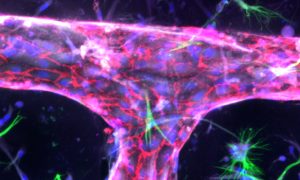
Barriers against malaria
The Bernabeu Group aims to increase our knowledge of cerebral malaria, using in vitro engineered networks of human blood vessels and brain cells.
SCIENCE & TECHNOLOGY2021
picture-of-the-weekscience-technology

The Bernabeu Group aims to increase our knowledge of cerebral malaria, using in vitro engineered networks of human blood vessels and brain cells.
SCIENCE & TECHNOLOGY2021
picture-of-the-weekscience-technology
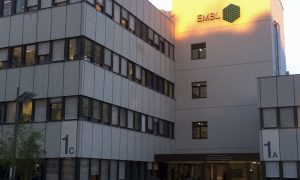
Throwback to June 2014: While EMBL Heidelberg’s main entrance is still in the dark, the well-known EMBL logo is already lit by the morning sun.
LAB MATTERS2021
lab-matterspicture-of-the-week
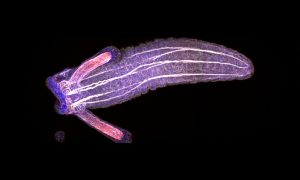
This image of a young Nematostella vectensis polyp shows two of the characteristic tentacles as well as the gaping mouth of the animal.
SCIENCE & TECHNOLOGY2021
picture-of-the-weekscience-technology

The cafeteria at EMBL Heidelberg now offers espresso and cappuccino with a more intense flavour and which are produced in a ‘green’ way.
LAB MATTERS2021
lab-matterspicture-of-the-week
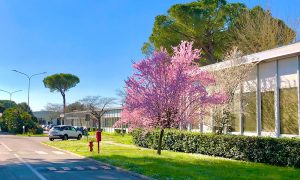
EMBL’s site in Monterotondo has recently been blessed with blue skies and sunshine, leading to trees blooming early on campus.
LAB MATTERS2021
lab-matterspicture-of-the-week

Nassos Typas has received the German VAAM Research Award.
EMBL ANNOUNCEMENTSLAB MATTERS2021
embl-announcementslab-matters
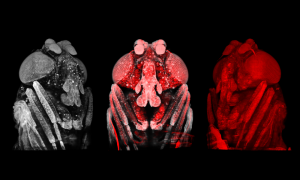
Like caterpillars turning into beautiful butterflies, fruit fly larvae have to go through metamorphosis to finish their development. However, despite the fruit fly Drosophila melanogaster being one of the best studied model organisms in biology, comparatively little attention has been given to this…
SCIENCE & TECHNOLOGY2021
picture-of-the-weekscience-technology
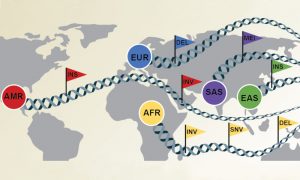
A collaboration including EMBL scientists has created the most diverse set of reference human genomes ever assembled.
SCIENCE & TECHNOLOGY2021
sciencescience-technology
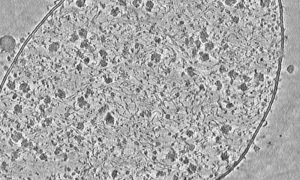
Liang Xue used cryo-electron tomography to capture this detailed image of a Mycoplasma pneumoniae cell.
SCIENCE & TECHNOLOGY2021
picture-of-the-weekscience-technology
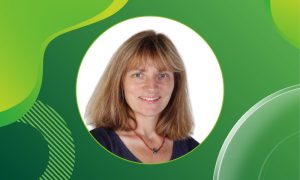
Anne Ephrussi has been awarded the German Feldberg Prize 2022 in recognition of her outstanding research.
EMBL ANNOUNCEMENTSLAB MATTERS2021
embl-announcementslab-matters
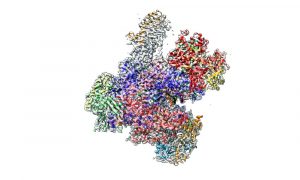
This week's Picture of the Week, which could also be a masterpiece of modern art, shows the enzyme RNA polymerase III, an assembly of 17 individual proteins combined into this complex structure.
SCIENCE & TECHNOLOGY2021
picture-of-the-weekscience-technology
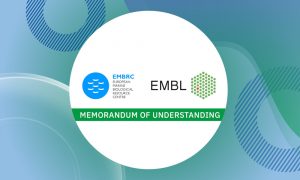
EMBL and EMBRC have signed a memorandum of understanding for increased scientific collaboration.
CONNECTIONSLAB MATTERS2021
connectionslab-matters

The regular structures of crystals are a source of inspiration and fascination to us humans. While the crystals in this picture were not grown in nature, but instead by Petra Drncova from EMBL Grenoble, they share the same attributes as those found in nature.
SCIENCE & TECHNOLOGY2021
picture-of-the-weekscience-technology
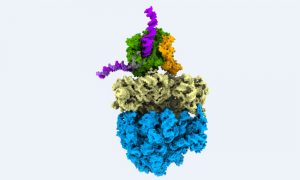
This colourful image shows biological information flow in action: It’s a supramolecular assembly of DNA, RNA and proteins, observed directly inside a bacterial cell while turning genetic information into protein.
SCIENCE & TECHNOLOGY2021
picture-of-the-weekscience-technology
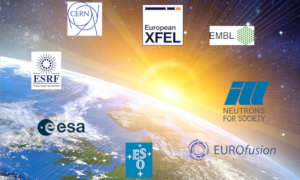
The latest issue of Science in School highlights the eight members of EIROforum.
EMBL ANNOUNCEMENTSLAB MATTERS2021
embl-announcementslab-matters
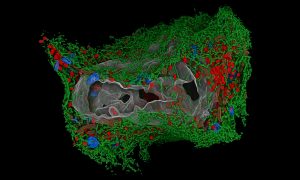
It’s almost a year since the coronavirus outbreak was declared a pandemic, affecting all our lives. While the virus continues its grip on the world, scientists are understanding it better and better, increasing our knowledge about it and opening up new ways to fight it.
SCIENCE & TECHNOLOGY2021
picture-of-the-weekscience-technology
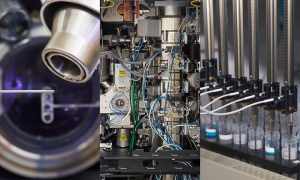
EMBL’s sites in Grenoble, Hamburg, and Heidelberg form the newest Instruct Centre. The new centre offers users access to a broad range of state-of-the-art facilities.
CONNECTIONSLAB MATTERS2021
connectionslab-matters
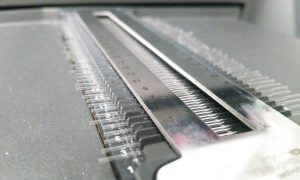
Structural biologists want to study proteins at the atomic level. The device shown in this Picture of the Week is essential for this.
SCIENCE & TECHNOLOGY2021
picture-of-the-weekscience-technology
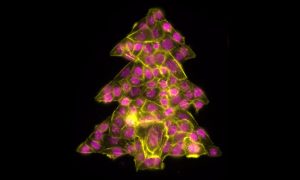
It is that time of year to get into the holiday spirit, prepare for some time at home and relax after a strange and stressful year. Even the cells in our Picture of the Week are getting into the holiday spirit, forming this colourful Christmas tree.
SCIENCE & TECHNOLOGY2020
picture-of-the-weekscience-technology
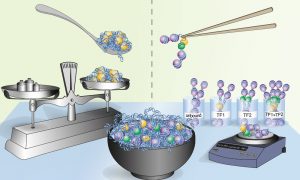
Gene activation requires the cooperative activity of multiple transcription factors. Until now, the mechanism used by these factors to coordinate their actions has been poorly understood. EMBL’s Krebs group presents a DNA footprinting method that makes it possible to determine whether…
SCIENCE & TECHNOLOGY2020
sciencescience-technology
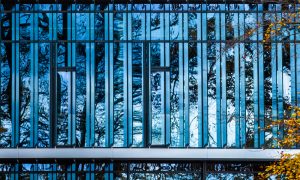
With the external scaffolding removed, another step in the construction of the EMBL Imaging Centre is complete. Now we get a first glimpse of the final look of this stunning building.
LAB MATTERS2020
lab-matterspicture-of-the-week
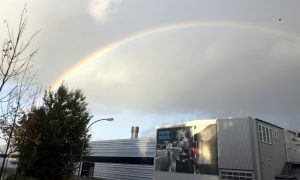
Hamburg hosts one of EMBL’s six sites. The city is notorious for its windy and rainy weather. Lots of rain also means a high chance of beautiful rainbows!
LAB MATTERS2020
lab-matterspicture-of-the-week
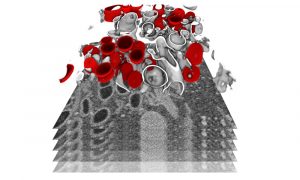
Researchers have studied SARS-CoV-2 replication in cells and obtained detailed insights into the alterations induced in infected cells. This information is essential to guide the development of urgently needed therapeutic strategies for suppressing viral replication and induced pathology.
SCIENCE & TECHNOLOGY2020
sciencescience-technology
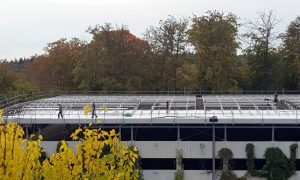
Despite the cold autumn weather, workers are busy on the rooftop of the parking garage at EMBL Heidelberg. The 2176 m² rooftop is getting transformed into a combination of a green roof and a photovoltaic plant. The planted green roof will retain rainwater, while the solar panels – installed in…
LAB MATTERS2020
lab-matterspicture-of-the-week
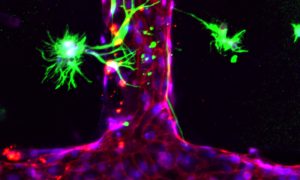
To help understand cerebral malaria the Bernabeu group has created in vitro engineered networks of human blood vessels.
SCIENCE & TECHNOLOGY2020
picture-of-the-weekscience-technology
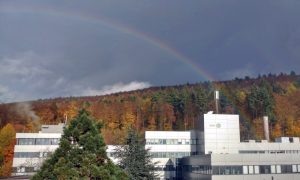
On autumn days without Heidelberg’s characteristic fog, the woods present themself in beautiful colours. You may even capture a rainbow.
SCIENCE & TECHNOLOGY2020
picture-of-the-weekscience-technology
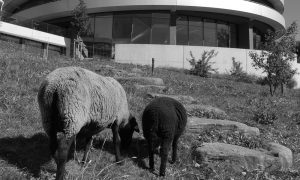
In 2012, EMBL used ecological lawn mowers to keep the grass short around the Advanced Training Centre at EMBL Heidelberg.
LAB MATTERS2020
lab-matterspicture-of-the-week
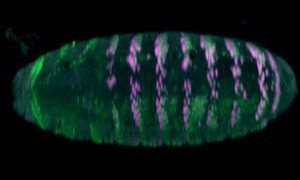
Researchers from EMBL Heidelberg have established an automated pipeline to create mutations in genomic enhancers, letting them watch evolution unfold before their eyes.
SCIENCE & TECHNOLOGY2020
sciencescience-technology
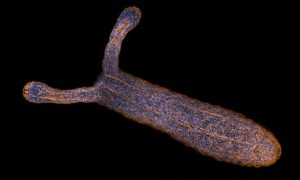
Sea anemones are amazing creatures. Despite their plant-like appearance and their tendency to remain fixed in one spot, they are actually animals.
SCIENCE & TECHNOLOGY2020
picture-of-the-weekscience-technology
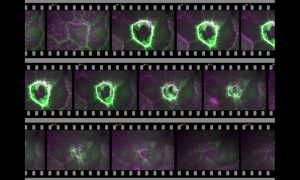
We’ve all had wounds at certain times in our lives. But they heal due to the self-repairing mechanisms in the body.
SCIENCE & TECHNOLOGY2020
picture-of-the-weekscience-technology
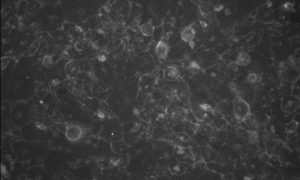
Researchers have found the cause of dilated cardiomyopathy – a leading cause of heart failure – and identified a potential treatment for it: a drug already used to treat acne.
SCIENCE & TECHNOLOGY2020
sciencescience-technology
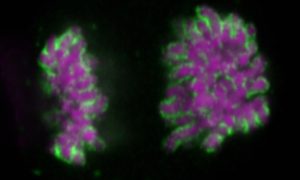
Researchers have uncovered how cells remove unwanted components from the nucleus following mitosis.
SCIENCE & TECHNOLOGY2020
sciencescience-technology
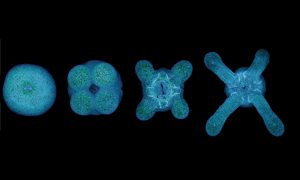
An international group of researchers, led by scientists from EMBL Heidelberg, have discovered that the number of tentacle arms a sea anemone grows depends on the amount of food it eats.
SCIENCE & TECHNOLOGY2020
sciencescience-technology
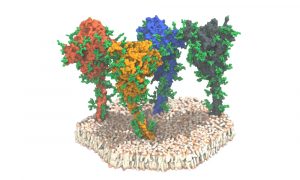
Researchers studied the spike protein on the surface of the SARS-CoV-2 virus. With its spikes, the virus binds to human cells and infects them. The study gave surprising insights into the spike protein, including an unexpected freedom of movement and a protective coat to hide it from antibodies.
SCIENCE & TECHNOLOGY2020
sciencescience-technology
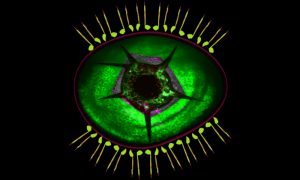
This image is a composite of lateral pentascolopidial organs, a wing imaginal disc pouch, and an epithelial wound in a Drosophila larva. The organs are arranged here like eyelashes. Cells surrounding an epidermal wound appear as the iris and pupil of this artistic eye.
SCIENCE & TECHNOLOGY2020
picture-of-the-weekscience-technology
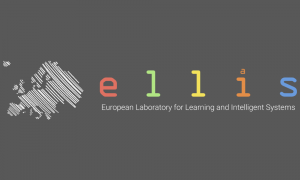
Researchers from all life science disciplines – from fundamental biological research to medical applications – generate immense datasets. Analysing these datasets and gaining new knowledge from them is a growing challenge for scientists. The fields of artificial intelligence (AI) and machine…
LAB MATTERSSCIENCE & TECHNOLOGY2020
lab-mattersscience-technology
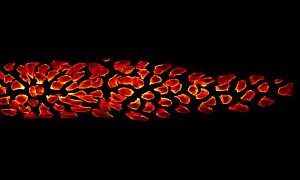
This group of cells represents an interesting example of organ formation where cells simultaneously move and change their shapes in a highly coordinated manner.
SCIENCE & TECHNOLOGY2020
picture-of-the-weekscience-technology
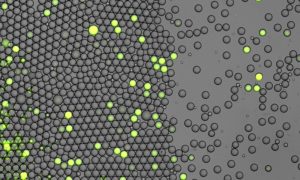
Bacterial cells are embedded in microfluidic droplets in oil. The fluorescence indicates the presence of the targeted DNA strain with the help of a characteristic DNA sequence.
SCIENCE & TECHNOLOGY2020
picture-of-the-weekscience-technology

The image shows one of the four rows of roof lights above the atrium, which is the main public space of the Imaging Centre.
SCIENCE & TECHNOLOGY2020
picture-of-the-weekscience-technology
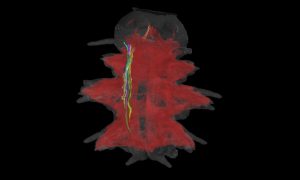
The image shows a larva of Platynereis dumerilii, a marine worm. The image here was produced by Constantin Pape, a visiting predoctoral fellow in the Kreshuk group at EMBL Heidelberg.
SCIENCE & TECHNOLOGY2020
picture-of-the-weekscience-technology

The CrystalDirect® technology, combined with the web-based CRIMS software enable a fully automated, remote-controlled protein-to-structure pipeline.
LAB MATTERS2020
lab-matters
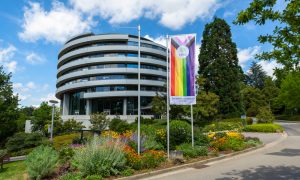
EMBL brings together more than 1700 people from all over the world, from a variety of academic and cultural backgrounds. This creates an environment in which there is constant exchange of both scientific knowledge and cultural heritage. While it seems obvious that EMBL, as an international…
LAB MATTERS2020
lab-matterspicture-of-the-week
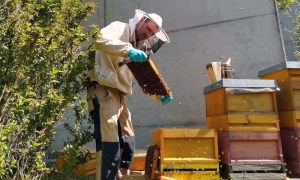
Local beekeeper Jörg Staffel has set up three bee colonies on the grass slope in front of the ATC building.
LAB MATTERS2020
lab-matterspicture-of-the-week
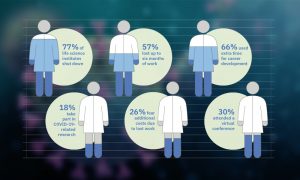
Jan Korbel and Oliver Stegle have performed a survey of fellow life scientists to learn how the current crisis, with partial or complete institutional shutdowns, is affecting their work.
LAB MATTERSSCIENCE & TECHNOLOGY2020
lab-mattersscience-technology

The European Molecular Biology Laboratory has secured 6.8 million Euros funding from the European Commission to launch a unique training programme. The ARISE Programme will train and develop Europe’s next generation leadership for research infrastructures in the life sciences.
LAB MATTERS2020
lab-matters
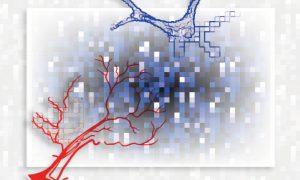
Scientists discovered that antihypertensive agent alters the tissue characteristics of colon cancer metastases. This "stiffness" of metastases has an effect on the therapeutic success.
SCIENCE & TECHNOLOGY2020
sciencescience-technology
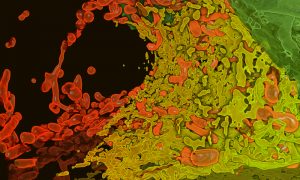
This image is a 3D-rendering of the automatic segmentation of a HeLa cell, made by Julian Hennies from the Schwab team at EMBL Heidelberg.
SCIENCE & TECHNOLOGY2020
picture-of-the-weekscience-technology
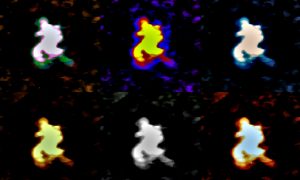
Researchers from EMBL Grenoble have developed a way to visualise large RNAs in 3D using biochemical and structural biology techniques.
SCIENCE & TECHNOLOGY2020
sciencescience-technology
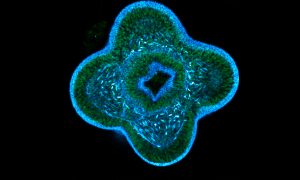
The image shown here, taken by Anniek Stokkermans from EMBL’s Ikmi Group, shows a larva of Nematostella vectensis.
SCIENCE & TECHNOLOGY2020
picture-of-the-weekscience-technology

EMBL welcomes NetApp, a leader in cloud data services empowering global organisations to change their world with data, as member of the Corporate Partnership Programme of the EMBL Advanced Training Centre.
CONNECTIONSLAB MATTERS2020
connectionslab-matters
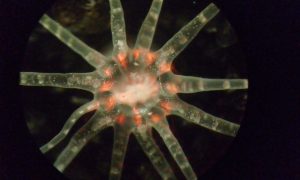
This image of the starlet sea anemone was taken by Petrus Steenbergen using a stereoscope.
SCIENCE & TECHNOLOGY2020
picture-of-the-weekscience-technology

The image shown here, taken by Daniel Rios-Barrera from the Leptin Group shows the cells of the early wing tissue of the fly during larval development.
SCIENCE & TECHNOLOGY2020
picture-of-the-weekscience-technology
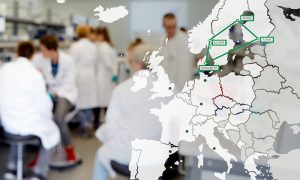
The Nordic EMBL Partnership for Molecular Medicine has been awarded 210,000 euros. The funds will be used to train the next generation of specialists and research leaders in molecular medicine in the Nordic countries.
CONNECTIONSLAB MATTERS2020
connectionslab-matters
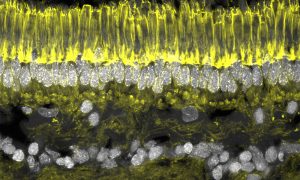
This Picture of the Week shows a stained cryosection of a retina – the light-sensitive part of the eye – of an ancient fish, the lamprey.
SCIENCE & TECHNOLOGY2020
picture-of-the-weekscience-technology
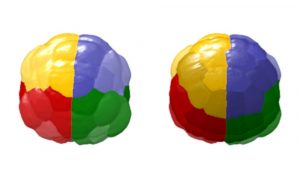
Researchers from EMBL Heidelberg have created a complete description of early embryo development, accounting for every single cell in the embryo.
SCIENCE & TECHNOLOGY2020
sciencescience-technology
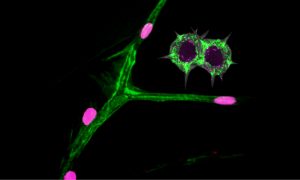
What may look like a branch of a tree with the first flower buds emerging after winter are, in fact, tracheal cells of a fruit fly larva and their nuclei.
SCIENCE & TECHNOLOGY2020
picture-of-the-weekscience-technology
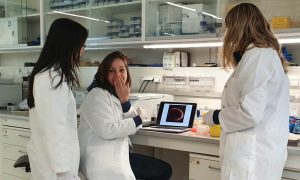
EMBL is all about exciting science, through which we aim to achieve a fundamental understanding of biological processes.
SCIENCE & TECHNOLOGY2020
picture-of-the-weekscience-technology

The causes of 40 percent of all cases of certain medulloblastoma – dangerous brain tumours affecting children – are hereditary. These are the findings of a recent genetic analysis carried out by scientists from EMBL and numerous colleagues around the world.
SCIENCE & TECHNOLOGY2020
sciencescience-technology
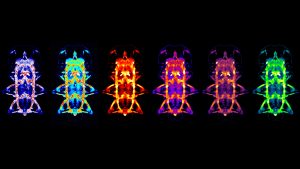
Paola Bertucci, from the Arendt Group at EMBL Heidelberg, studies the evolution of Platynereis dumerilii – a species of annelid polychaete worm.
SCIENCE & TECHNOLOGY2020
picture-of-the-weekscience-technology
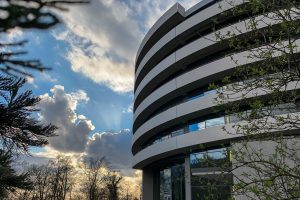
The iconic ATC – celebrating its 10 year anniversary this year – reflects the blue sky, the clouds and the rays of the Sun.
LAB MATTERS2020
lab-matterspicture-of-the-week
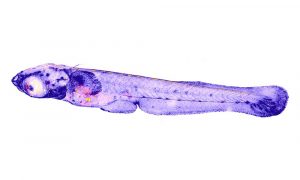
The medaka shown in this Picture of the Week was captured by Eva Hasel, a postdoc in the Leptin group at EMBL Heidelberg.
SCIENCE & TECHNOLOGY2020
picture-of-the-weekscience-technology
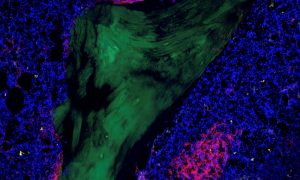
The Heidelberg-based LeukoSyStem consortium investigates leukaemia stem cells in acute myeloid leukaemia. The German Federal Ministry of Education and Research financially supports this collaboration between Heidelberg University Hospital, HI-STEM gGmbH, the German Cancer Research Center and EMBL.
EMBL ANNOUNCEMENTS2020
embl-announcementsscience

This image, taken by Raphaël Cohen-Aberdam from the Cipriani team, shows that the weather for the Grenoble Lab Ski Day 2020 was just perfect!
LAB MATTERS2020
lab-matterspicture-of-the-week
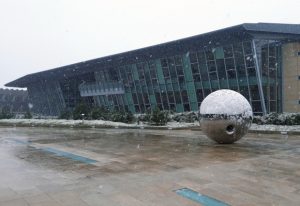
Colder winter weather has finally arrived EMBL-EBI. It’s the first time the site has seen snow this winter.
LAB MATTERS2020
lab-matterspicture-of-the-week
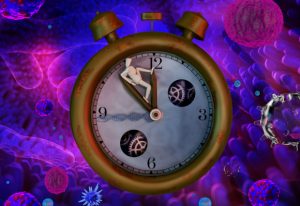
EMBL co-leads most comprehensive study of genetic causes of cancer
SCIENCE & TECHNOLOGY2020
sciencescience-technology
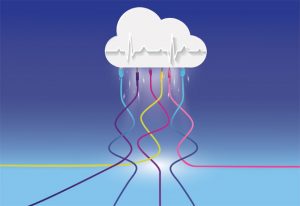
Scientists from EMBL present a tool for large-scale analysis of genomic data with cloud computing. Main advantages of the new tool, called Butler, are continuous system monitoring and its ability to self-heal in case of failure, allowing for 43% more efficient data processing than previous…
SCIENCE & TECHNOLOGY2020
sciencescience-technology
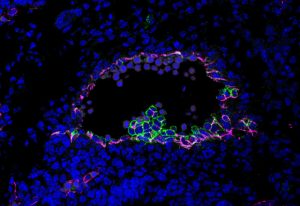
Morgan Oatley and her colleagues in Christophe Lancrin’s group investigated how haematopoietic stem cells emerge from the endothelium in developing mouse embryos.
SCIENCE & TECHNOLOGY2020
picture-of-the-weekscience-technology
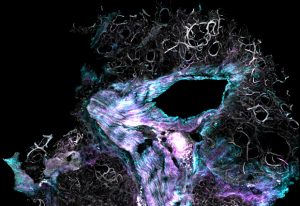
Muzamil Majid Khan, a postdoc in the Pepperkok team at EMBL Heidelberg, studied the piece of tissue visible in this image.
SCIENCE & TECHNOLOGY2020
picture-of-the-weekscience-technology
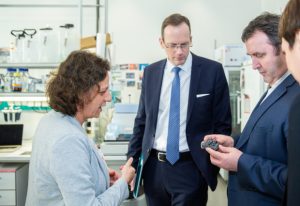
László Palkovics, Hungarian Minister for Innovation and Technology, visited EMBL Heidelberg
CONNECTIONS2020
connectionsevents

Judith Reichmann will receive this year’s Paul Ehrlich and Ludwig Darmstaedter Prize for Young Researchers
EMBL ANNOUNCEMENTSLAB MATTERS2020
embl-announcementslab-matters
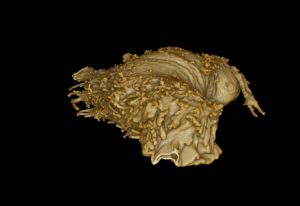
The image shown here is a 3D-rendering created by Julian Hennies from the Schwab team.
SCIENCE & TECHNOLOGY2020
picture-of-the-weekscience-technology
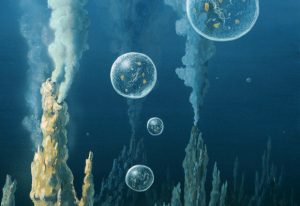
The latest issue of the free magazine, Science in School, is now available for teachers worldwide.
EMBL ANNOUNCEMENTSLAB MATTERS2020
embl-announcementslab-matters
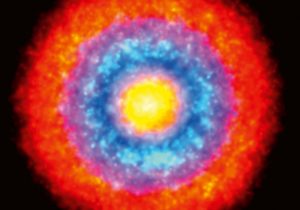
This image has been composed from thousands of individual super-resolution microscopy images. It was created by Markus Mund in the Ries Group.
SCIENCE & TECHNOLOGY2020
picture-of-the-weekscience-technology
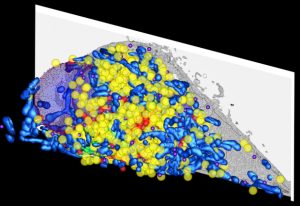
What might also be an artistic representation of a scattered bowl of Skittles is actually a 3D reconstruction of a high-pressure frozen HeLa cell.
SCIENCE & TECHNOLOGY2020
picture-of-the-weekscience-technology
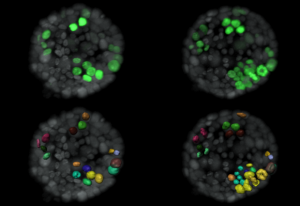
Breast cancer is the second leading cause of cancer-related deaths in women. It is so deadly because tumours often return after successful cancer treatment. This recurrence is caused by individual dormant cancer cells remaining inside the breast. These cells can develop into active cancer cells…
SCIENCE & TECHNOLOGY2019
picture-of-the-weekscience-technology
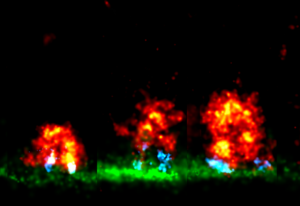
What looks like a photo-series of an explosive eruption are actually uptaking proteins, captured by Markus Mund from the Ries Group at EMBL Heidelberg. The images were made in an attempt to learn how the different proteins that take up molecules into the cells via endocytosis – the cellular…
SCIENCE & TECHNOLOGY2019
picture-of-the-weekscience-technology
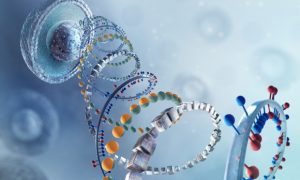
Researchers have developed a cheaper and faster method to check for genetic differences in individual cells
SCIENCE & TECHNOLOGY2019
sciencescience-technology
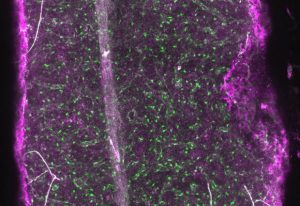
Researchers have developed new methods to reveal the 3D-organisation of bone marrow at a single cell level
SCIENCE & TECHNOLOGY2019
sciencescience-technology

Celebrating the construction progress with a traditional German ceremony
EMBL ANNOUNCEMENTS2019
embl-announcementsevents
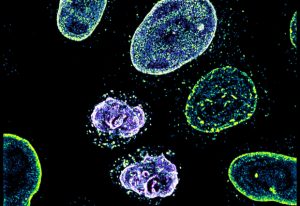
This picture of the week, taken by Arina Rybina in the Ellenberg group at EMBL Heidelberg, shows a high-resolution 3D microscopy image of living human cells: HeLa cells. In this fascinating fluorescing microspace, two newly formed daughter nuclei are captured to study the assembly of nuclear pore…
SCIENCE & TECHNOLOGY2019
picture-of-the-weekscience-technology
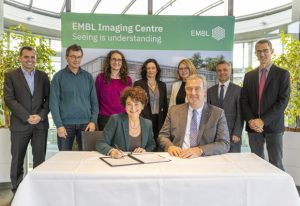
Unique long-term collaboration agreement to provide new imaging technologies
EMBL ANNOUNCEMENTS2019
embl-announcementsevents
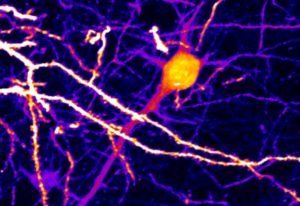
The brain is the most complex organ in the human body. Yet despite it being the organ that makes us conscious beings – and despite the fact that researchers have been studying it for generations – it’s still a constant source of surprise. To help lift the veil on some of its mystery, Lina…
SCIENCE & TECHNOLOGY2019
picture-of-the-weekscience-technology
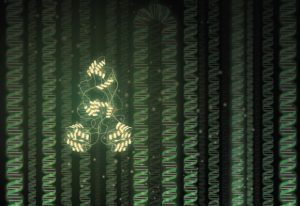
New possibilities for gene therapies
SCIENCE & TECHNOLOGY2019
sciencescience-technology
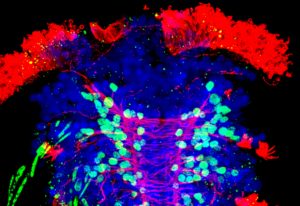
Is it a fungus or a strange plant? Actually it’s the larval form of Platynereis – a group of marine ringed worms. Scientists have been using them in their studies for the past 70 years, and they are among the preferred lab organisms. They are easy to keep in the lab, and under temperature and…
SCIENCE & TECHNOLOGY2019
picture-of-the-weekscience-technology
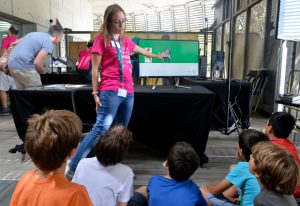
EMBL not only produces excellent science and innovative technologies; it also shares its knowledge and experience with partners from around the world – and with the public. As well as offering teacher training in the European Learning Laboratory for the Life Sciences, science movie nights, and…
LAB MATTERS2019
lab-matterspicture-of-the-week
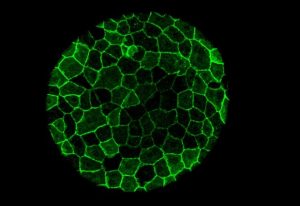
Despite missing the characteristic stripes one would expect from a zebra – or a zebrafish – the fractals in this Picture of the Week show a zebrafish; or at least some cells in a zebrafish embryo, a few hours after fertilisation. Zebrafish are not only popular aquarium fish, they are also an…
SCIENCE & TECHNOLOGY2019
picture-of-the-weekscience-technology
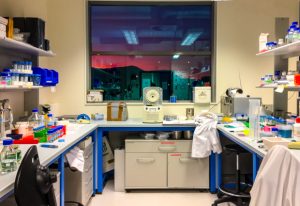
It’s evening and the Sun is setting over the mountains surrounding the city of Grenoble – home to one of EMBL’s six sites – bathing the mountaintops in fiery red light. The Picture of the Week, taken by Zuzanna Kaczmarska shows the lab she worked in after a long and busy day. Bottles…
LAB MATTERS2019
lab-matterspicture-of-the-week
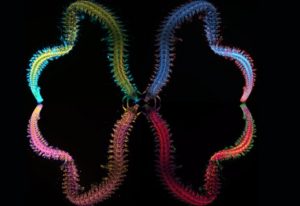
This gorgeous image of a stained adult marine worm was created by former EMBL postdoc Hernando Martinez using structured microscopy. The worm itself was captured during plankton extraction off the coast of Sweden. There are over 10 000 species of these swimming worms, and they have adapted to every…
SCIENCE & TECHNOLOGY2019
picture-of-the-weekscience-technology
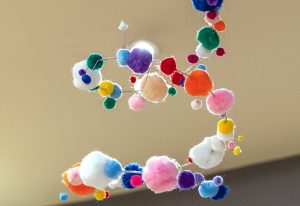
The most basic building blocks of life are the biological molecules in our cells. While these molecules are too small to see with most microscopes, they have incredibly complex and beautiful structures. Therefore, the Protein Data Bank in Europe (PDBe), The Art Society CANTAB and The Art Society…
LAB MATTERS2019
lab-matterspicture-of-the-week
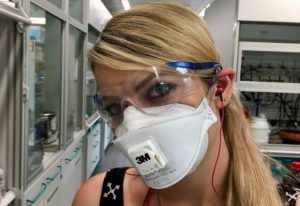
Working in a lab very often requires some kind of protection: gloves, safety goggles, lab coat, hearing protection. Sandra – now at BASF in Ludwigshafen – had fun getting ready for her work in the medicinal chemistry lab at EMBL! Here, she is about to grind potassium permanganate and copper…
PEOPLE & PERSPECTIVES2019
people-perspectivespicture-of-the-week
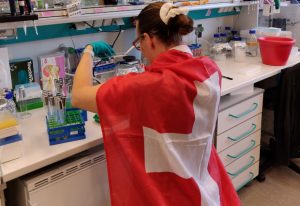
The 1700 people working at EMBL’s six sites come from more than 80 different countries. Many of them haven’t come straight from their home country to one of the EMBL sites but have also lived in other countries in between. While all of them are proud to work at EMBL they are also proud of…
PEOPLE & PERSPECTIVES2019
people-perspectivespicture-of-the-week
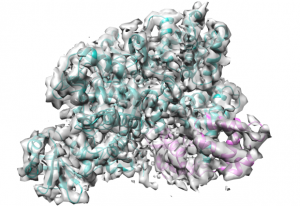
SidJ enforces a unique modification on human proteins and helps legionella grow.
SCIENCE & TECHNOLOGY2019
sciencescience-technology
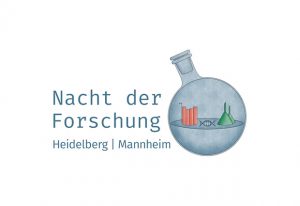
Programme for Heidelberg | Mannheim
EMBL ANNOUNCEMENTS2019
embl-announcementsevents
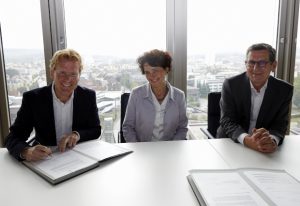
Funding for EMBL | Stanford Life Science Alliance.
EMBL ANNOUNCEMENTS2019
embl-announcementsevents
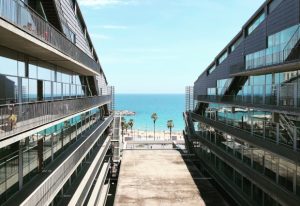
EMBL has six sites in Europe and the newest is EMBL Barcelona. It opened in October 2017 and is still growing. Eventually, it will be home to eight research groups, all of them working to discover how tissues and organs function and develop. EMBL Barcelona is located in the Barcelona Biomedical…
LAB MATTERS2019
lab-matterspicture-of-the-week
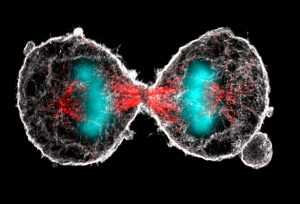
What looks like a pair of scary alien eyes is actually the final stage in the duplication of a cell. Cell duplication is preceded by a process called mitosis, in which the replicated chromosomes are separated into two new nuclei. Mitosis is the prerequisite for a cell to divide into two identical…
SCIENCE & TECHNOLOGY2019
picture-of-the-weekscience-technology
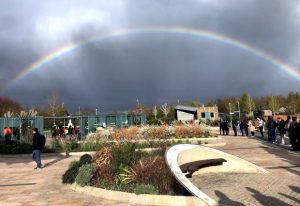
EMBL is an intergovernmental organisation, currently supported by 26 member states, one prospect and two associate member states. There are more than 1700 people working at EMBL, who come from more than 80 countries, creating a multicultural environment. EMBL also operates from six sites in Europe:…
LAB MATTERS2019
lab-matterspicture-of-the-week
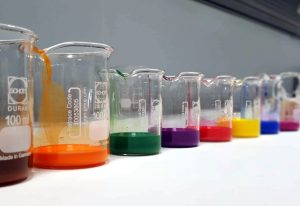
Laboratories all over the world are often chaotic, a bit messy and look grey and unwelcoming. Not so in this lab, pictured by EMBL staff member Emily Savage. The differently coloured fluids, arranged in a row, bring vivid colours into the more subdued environment of the lab. The picture was taken…
LAB MATTERS2019
lab-matterspicture-of-the-week
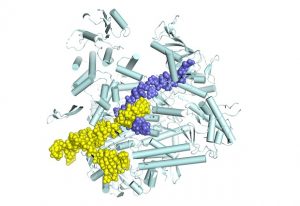
Snapshots of the flu virus replication machine in action
SCIENCE & TECHNOLOGY2019
sciencescience-technology

EMBL’s sites provide spectacular views, such as this fiery sunset at the Wellcome Genome Campus in Hinxton. The campus, in the heart of the Cambridgeshire countryside, is home to several institutes and organisations working on genomics and computational biology. Among them is EMBL’s European…
LAB MATTERS2019
lab-matterspicture-of-the-week

EMBL is a world-leading organisation for life science research. Its scientists work in diverse research fields spanning the whole of molecular biology. While the molecules the researchers are working on are often microscopic and impossible to see with the naked eye, one research topic clearly…
SCIENCE & TECHNOLOGY2019
picture-of-the-weekscience-technology
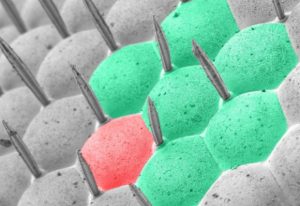
The hexagons visible in this Picture of the Week are the eyes of an ordinary housefly, visualised with a scanning electron microscope. Former staff member Anna Steyer, who captured this brilliant image, has coloured seven of the receptor areas of the eye to create a stylised version…
LAB MATTERS2019
lab-matterspicture-of-the-week
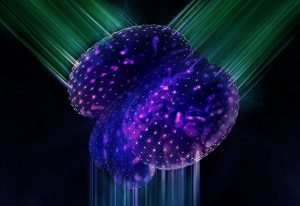
A newly developed 3D microscope visualises fast biological processes better than ever.
SCIENCE & TECHNOLOGY2019
sciencescience-technology
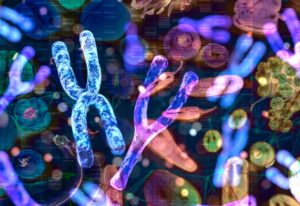
EMBL scientists have discovered that the proteome is substantially affected by both sex and diet
SCIENCE & TECHNOLOGY2019
sciencescience-technology
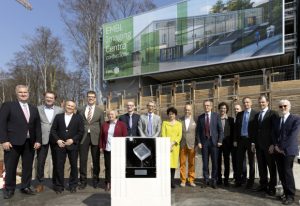
Foundation stone ceremony for world-class high-resolution microscopy centre in Heidelberg
LAB MATTERS2019
eventslab-matters
No matching posts found